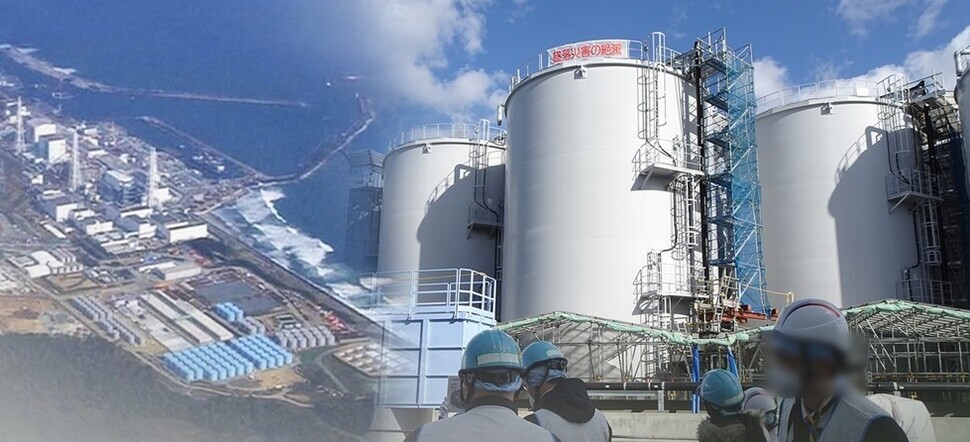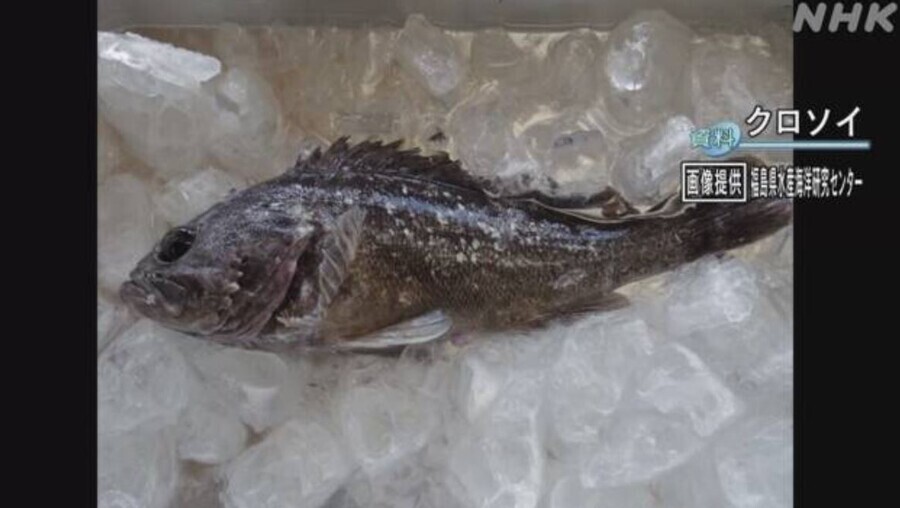hankyoreh
Links to other country sites 다른 나라 사이트 링크
TEPCO plans to compensate Japanese fishers for Fukushima-related losses – but Korean fishers won’t be harmed, it says

This August the Japanese government will begin to dump 1.33 million metric tons of contaminated water stored at the Fukushima Daiichi nuclear power plant into the sea, a process that will take place over the next 30 to 40 years.
Although the discharge is in the early stages, Japanese fishers and neighboring countries remain concerned. The Hankyoreh asked TEPCO, the state-run electricity corporation of Japan initiating the wastewater’s release, key questions related to the discharge. TEPCO provided written responses on Monday.
The Japanese government’s rationale for releasing the contaminated water was that there were insufficient storage tanks at the site and that it was necessary to free up workspace for decommissioning.
However, there are many people who believe that there are alternatives to the discharge, such as diluting radioactive substances that are deadly to the environment and human health with ALPS to below the legal threshold, then storing the water somewhere on land or solidifying the water for reuse (such as in the form of concrete used to build seawalls).
TEPCO took a dim view of the Hankyoreh’s inquiry into its views on these alternatives, stating, “Storage outside of nuclear power plants requires considerable coordination and time, such as obtaining the understanding of local governments and obtaining authorization for radioactive waste storage facilities,” and that “there are also technical issues, since, when solidified, the volume of the water will be increased by three to six times, and securing storage sites is challenging.”
However, the amount of contaminated water generated is lower than initially expected, and the tanks are predicted to reach capacity sometime between February and June of next year. With at least eight months if not a year left until that time, TEPCO’s response felt flimsy.
China and other countries have pointed out that if the contaminated water is truly safe, it can be used for agriculture and industry in Japan. TEPCO emphasized that “ocean discharge is routinely carried out at nuclear power plants in many countries around the world,” and that “there is no example of using nuclear power plant drainage for agricultural and industrial use in Korea.”
Its logic is that contaminated water is safe but using it in that way is “unprecedented.”
If contaminated water is truly safe, as Japan claims, the verification of its safety should be transparent. To do this, it is necessary to take a variety of samples and analyze them. But so far, TEPCO has monopolized the sampling process.
The International Atomic Energy Agency (IAEA), which released a final report on July 4 stating that the contaminated water was up to international safety standards, did not actually take its own samples.

When asked by the Hankyoreh whether South Korea or other parties might be able to collect their own samples to allay misgivings, TEPCO refused, stating that it would be “appropriate going forward to receive confirmation through the IAEA as to whether the results of our collection and analysis are accurate.” It declined to give a response on why it would not allow sample collection.
In the waters surrounding the Fukushima Daiichi nuclear power plant, multiple fish have been found with radioactive doses exceeding the legal threshold. In the case of a rockfish found in May, cesium levels were 180 times the standard; in April, a fat greenling was found with a level 12 times the standard.
Why should fish ridden with cesium keep turning up? TEPCO replied that the cause “appears to be the fact that the fish in question were living in areas with high cesium concentrations near the intake channels of the plant’s first to fourth reactors,” although it added that it was “still early to reach conclusions.”
At the same time, it insisted that the fish “have nothing to do with ocean release of treated water that we are currently preparing for.”
The company also stressed that it had placed a metal mesh outside the power plant to prevent marine creatures such as the cesium-ridden rockfish from getting out.
“Fish that are over 5 centimeters in size, such as that rockfish, will not be able to move outside the intake channel,” it said, adding that there was “no fishing taking place inside the port” and that the marine life there was “not being shipped to the market.”
Even if this explanation is accepted, it means that Japan will be going ahead with dumping large volumes of contaminated water over a long period without having established exactly why contaminated fish are still turning up 12 years after the meltdown at the nuclear power plant. It also means it will be difficult to do anything about contamination in small fish measuring less than five centimeters.

The South Korean seafood industry is poised to take a direct hit once the release begins. Salt hoarding has already begun in South Korea, along with a growing movement of people who plan to avoid eating fish in the future.
In the case of this kind of reputational damage, TEPCO’s plan is to provide compensation to the Japanese public without restrictions on region, industry or duration.
The Hankyoreh asked whether it was also considering compensation for South Korean fishers who suffer direct losses.
In response, TEPCO said, “In addition to complying with international standards based on Japanese law, we have also been rigorously observing international law and adopting measures in consideration of international practices.”
“We do not release [water] that has a negative impact on human health and the ocean,” it stressed.
At the same time, it clearly signaled that it had no intention of offering such compensation.
“We do not believe there will be losses for neighboring countries,” it said.
Even as it compensates the Japanese public for the anticipated reputational damage, TEPCO’s attitude has been to refuse to even acknowledge losses suffered by people in other countries. Even today, we see the continuance of the logic of Japan’s longstanding practice of declining postwar compensation to South Koreans on grounds of nationality.
By Kim So-youn, Tokyo correspondent
Please direct questions or comments to [english@hani.co.kr]

Editorial・opinion
![[Column] Kim and Putin’s new world order [Column] Kim and Putin’s new world order](https://flexible.img.hani.co.kr/flexible/normal/500/300/imgdb/original/2024/0625/9617193034806503.jpg) [Column] Kim and Putin’s new world order
[Column] Kim and Putin’s new world order![[Editorial] Workplace hazards can be prevented — why weren’t they this time? [Editorial] Workplace hazards can be prevented — why weren’t they this time?](https://flexible.img.hani.co.kr/flexible/normal/500/300/imgdb/original/2024/0625/7817193028141614.jpg) [Editorial] Workplace hazards can be prevented — why weren’t they this time?
[Editorial] Workplace hazards can be prevented — why weren’t they this time?- [Editorial] Seoul failed to use diplomacy with Moscow — now it’s resorting to threats
- [Column] Balloons, drones, wiretapping… Yongsan’s got it all!
- [Editorial] It’s time for us all to rethink our approach to North Korea
- [Column] Why empty gestures matter more than ever
- [Editorial] Seoul’s part in N. Korea, Russia upgrading ties to a ‘strategic partnership’
- [Column] The tragedy of Korea’s perpetually self-sabotaging diplomacy with Japan
- [Column] Moon Jae-in’s defense doublethink
- [Column] S. Korea-China cooperation still has a long way to go
Most viewed articles
- 1Blaze at lithium battery plant in Korea leaves over 20 dead
- 2Foreign day laborers make up majority of death toll in Korean battery factory fire
- 3[Column] Kim and Putin’s new world order
- 4[Editorial] Workplace hazards can be prevented — why weren’t they this time?
- 5How sanctions are backfiring to fuel a new Eurasian alliance
- 6What made Korea’s lithium battery plant fire so deadly
- 7After Putin’s Pyongyang summit, Seoul and Moscow play dangerous game
- 8[Editorial] Seoul failed to use diplomacy with Moscow — now it’s resorting to threats
- 9Russia’s actions will dictate what weapons Seoul may supply to Ukraine, security adviser says
- 10Is Korea ready to protect the rights of Filipino domestic workers arriving this fall?